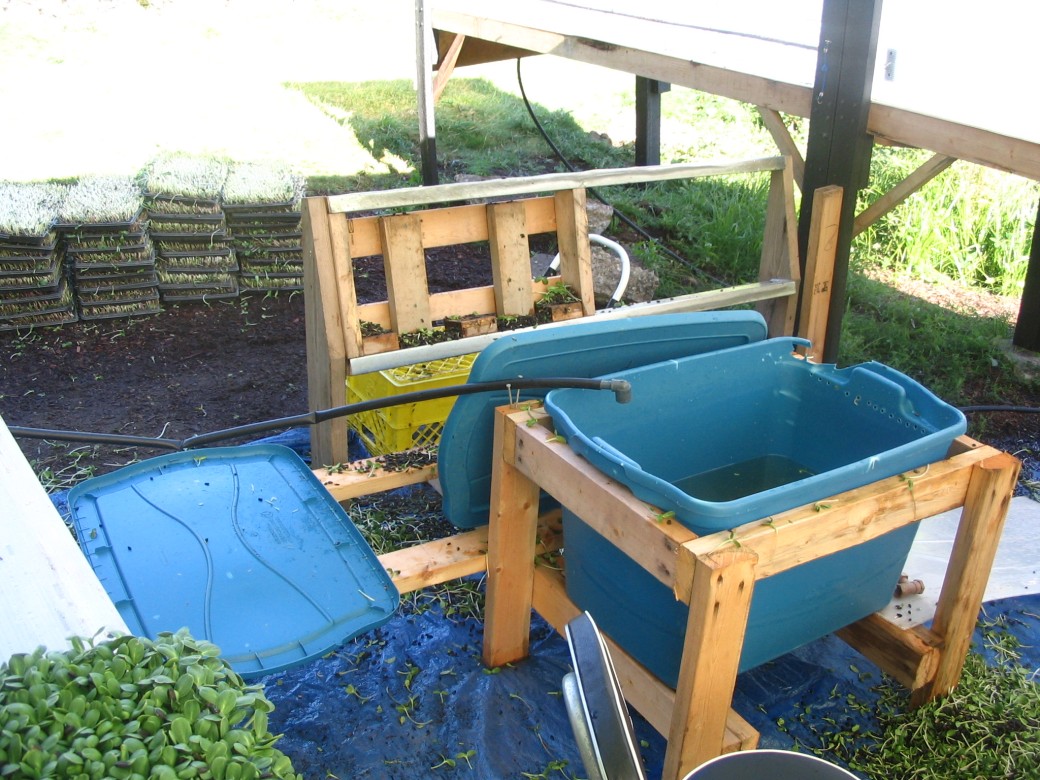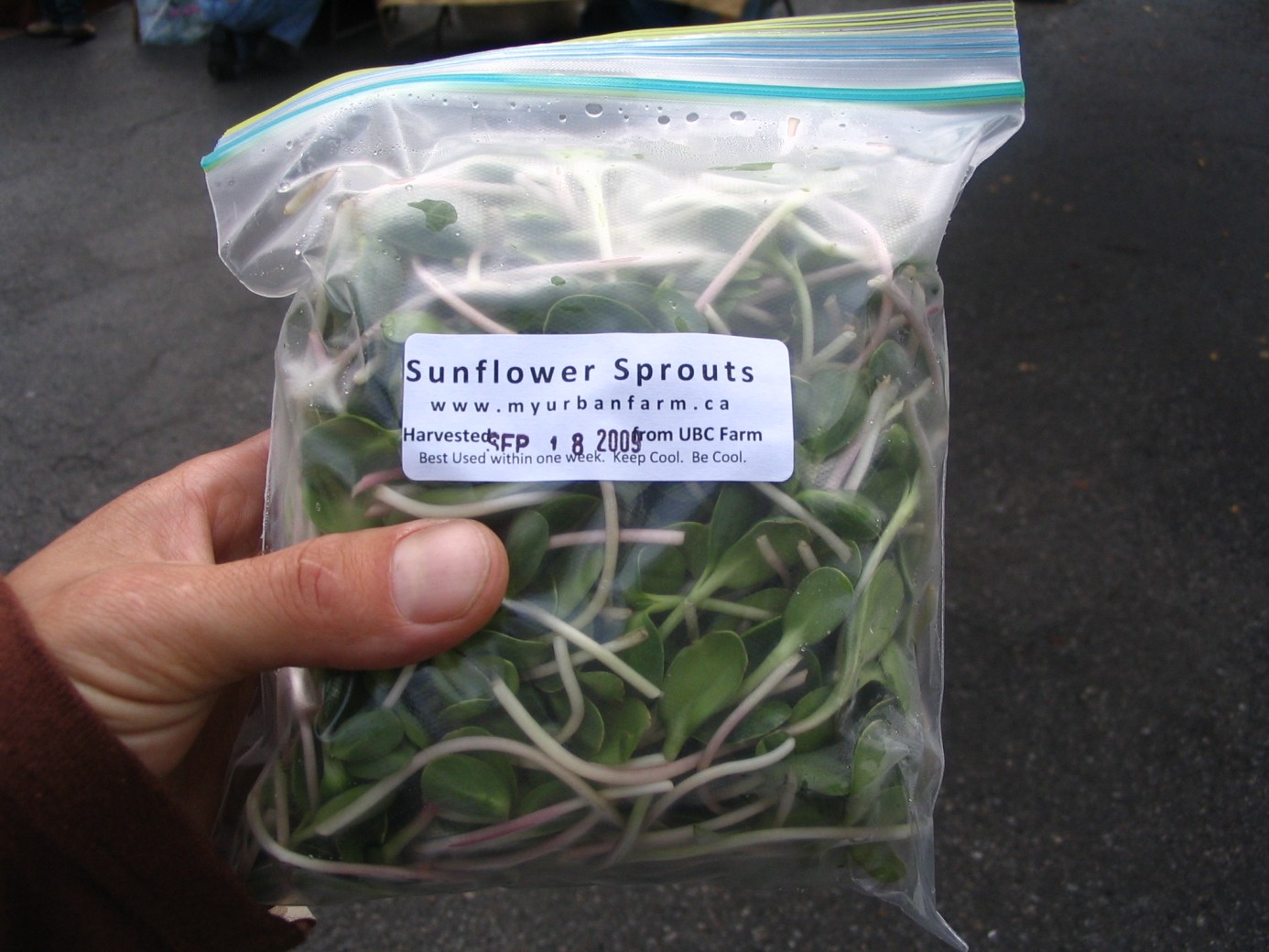Well, I have been a very naughty blogger (insert spanking joke here), so I am going to try and give an update to bring ya’ll up to speed.
After a difficult search for land I finally found a spot about 5 minutes from my house. The location is perfect for sprouts – good sun, fenced and secure, access to water, and otherwise non-gardenable land. It is basically across the road from Strathcona Park.
 The New Site and a cold apprentice!
The New Site and a cold apprentice!
This season I have taken on a part-time paid apprentice which has made work a little easier and a bit more rewarding. So far she has been very good and has contributed to to the process.
The season has been off to an erratic start. My goal is to double production this year, so there is a lot of pressure to produce sprouts. I started the season several weeks earlier than last year which has given me a chance to work out some kinks (insert another spanking joke here). But it has been difficult since the weather has been cold which results in a much smaller (though still good quality) sprout.
I have made a few improvements to the sprouting bench and expanded it by one section , allowing me to produce over 100 trays a week if wanted (not wanted). I have built doors on hinges that may access a little easier and added some light mesh to allow for cooling on hot summer days.
 Artsy shot of the growing bench.
Artsy shot of the growing bench.
But the sprouts have been very popular so far and I have added 3 new restaurants to my client list with more to come (I hope!). I will also be targeting catering companies soon.
My biggest change this year will likely be my switch to organic seeds. I had trouble sourcing the seed last year and I think I now have a good source of reliable organic seed. It is a little bit smaller, but actually grows fairly well and uniformly. My first trials were OK, but I did not have the optimum sowing rate. But I have 30 kg to work with so hopefully I get it right soon. If the trials work out with these batches than I will continue with the organic seed and apply for organic certification. If they do not perform well enough than I can return to the previous stock that I used. I would really like to stay with the organic seed as conventional seed is subject to lots of chemical use.
The first market this year was not great as we did not have a very good location. But the second market was much better and we sold out by 11:30 (which is way too early!). But we got lots of regular customers back and they were all excited to be buying sprouts again.
The production manual’s first version is finished and I have actually shared it with a few people. As this season progresses I will modify it to take into account changes I incorporate this season. I received a 96% grade for the manual as part of my directed studies project which is reassuring! But I have yet to meet with my professor to get his feedback – which is way more valuable than the grade.
I am also in the process of applying for a grant for the business this year. We should have the business plan done this week. I would use the funds to develop a marketing plan, upgrade the growing benches, cover my start up costs, and develop a product recall plan. It has been a good process writing the plan and has given me a glimpse of the future. The goal right now is to double production again by 2013 and to introduce new products including pea shoots (in process), wheat grass (soon), micro-greens (oh, where to start?), and vegetable starts.
Well, I hope that is a sufficient update after a long absence. I will do my best to keep things a bit more up to date!
 Then we had dinner and did introductions. This was the opportunity for urban farmers and supporters to talk about their initiatives or to say how they could support others’ work. It was great learning about the diversity of urban farming systems at work in Vancouver. I don’t think any two farms were using the same model – they were all so unique.
Then we had dinner and did introductions. This was the opportunity for urban farmers and supporters to talk about their initiatives or to say how they could support others’ work. It was great learning about the diversity of urban farming systems at work in Vancouver. I don’t think any two farms were using the same model – they were all so unique.








